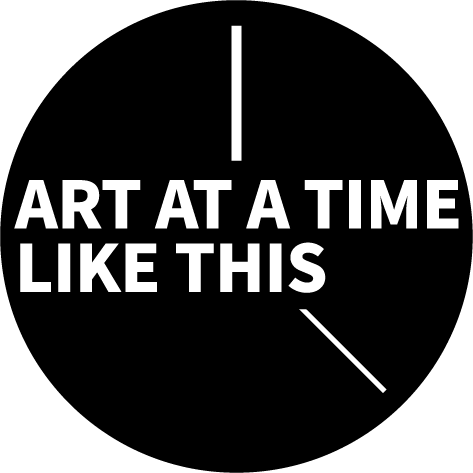
Miwako Tezuka
Curatorial Statement
The essence of Tsubasa Kato’s work lies in its carnivalesque nature. Through his performances with people’s participation, Kato creates a moment that is often absurdist, somewhat chaotic, yet, ultimately cathartic. A simple act such as pulling up a temporary structure off the ground aims to realize and visualize solidarity organically arising from a group of people. For example, Break It Before It’s Broken, realized by cooperation of a community of refugees facing eviction from their shantytown in Malaysia subverts the power dynamic between the authority and the refugees by making the latter the agent of symbolic destruction of mock-shacks. In Black Snake, Kato sought participation of Native Americans in Standing Rock to pull up and turn over an enormous crude wooden structure. Both of these action-based works not only present the power of collective efforts but also allegorize social, political, and economic struggles of those local communities. Completion of simple tasks, when achieved collectively, brings the sense of liberation.
On the other hand, They Do Not Understand Each Other and Woodstock 2017 simulate, with a touch of nonsensical humor, difficulties that we may find in forming solidarity. These works make us ask a very human question: is it possible to overcome our differences like political views without negating opposing individuals, parties, cultures, nations, etc.?
Tsubasa Kato
My work focuses on the interplay between performance and installation, especially the question of how to document performance in a way that actively engages the viewer in the museum space.
My performances are loosely organized: There is only a prescribed “goal” that must be reached (moving a giant object, performing a song while bound, blocking or crossing a road, etc.). Through staging many performances, which have involved anywhere from two to five hundred participants, I have come to realize that the more absurd the “goal” is, the more effectively it creates the potential for collective, active imagination. This absurdity also forces a departure from the fixed possibilities of the everyday. Ultimately, my performances reveal the physical limits of any one individual’s ability to reach a goal, and thus facilitate spontaneous, collective action.
As for my installations, they focus on narrativizing the collective consciousness that manifests inside my performances. They provide another layer of context that allows the viewer to perceive a story inside of the event. A defining feature of my work is the possibility it opens for viewers to freely and collectively ascribe to the performance new meanings that derive from the gulf between the museum space and the performance site.
What I am attempting to do is cross the perspectives of people inside and outside the museum, thereby creating a new imaginative space that can be shared by people across spatial and temporal distances.
Our understanding of the distance between people is changing greatly now through experiencing the coronavirus crisis. (As an aside, the word “human” in Japanese ((人間/Ningen)) is composed of two characters: Nin ((人)), which means “homo sapiens”, and Gen ((間)), which means relation, span, or distance).
As I stated above, I set a goal in my performances, and through it encourage people to gather and participate. When Japan experienced the Great Tohoku Earthquake nine years ago, I started an art project that began with volunteering in rubble-strewn Fukushima, and ultimately led to a performance in which 500 people who had suffered from the earthquake came together to participate. The meeting of people that this performance realized was a vision of solidarity at a moment when Japan was undoubtedly facing a crisis.
In an arena where we are fighting to realize our goal of overcoming the virus, however, we can no longer use physical congregations as our weapon. At a time when the fundamental human need to gather and unite against a crisis is barred off to us, how can we demonstrate our solidarity?
Now, what we can do is to once again put time into reconsidering the distances between us from each of our perspectives. We are always moving, and quickly at that. Now, though, we cannot move, let alone move quickly. What has become clear in not being able to get closer, or further away, is the problem of distance between us and the various people we overlooked before the crisis began. In this rather peculiar environment in which people of all countries are pursuing the same goal, we re-recognize our distance from others, and imagine each of their perspectives from our own. Isn’t this crisis challenging us as to whether we can return to this fundamental ability to imagine?
Break it Before it's Broken, 2015
Black Snake, 2017
Woodstock, 2017
They Do Not Understand Each Other, 2014





